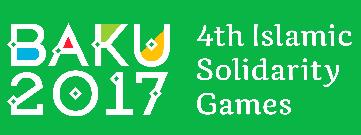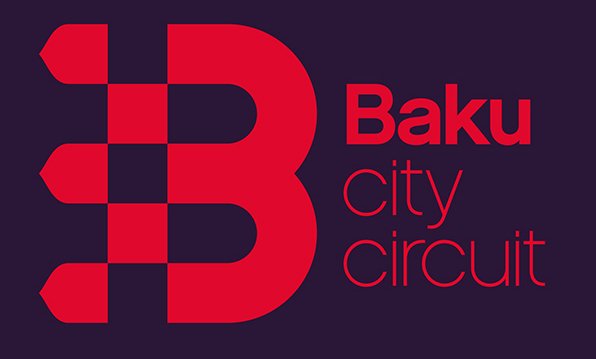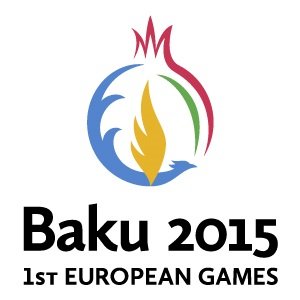NEWS
-
16.07.2020
Sabail District Centralized Library System has released a new video about Maiden Tower, a much loved symbol of Baku city.
The video provides insight into the oldest structure in Baku's old walled city, Azertag reported.
The video is available on its Instagram account.
Mysterious Maiden Tower is rising in the south-eastern part of the fortress of Icherisheher.
Some suggest that it was constructed between the 4th and 6th centuries AD, others have speculated it was built sometime between the 11th and 12th centuries.
The Tower has a secret underground passage which is thought to have run from the tower to the Shirvanshahs’ Palace, which was the last residence of the rulers of the Shirvan State, the most powerful state of Azerbaijan's history. An underground passage was discovered in the Walled City during archaeological excavations in 1982. The monument is especially gorgeous when lit up at night.
The symbol of Baku was included into the list of World Cultural Heratage of UNESCO in December of 2000.
-
14.07.2020
The art of shadow theater has a huge millennial history first appearing in China. Nowadays, this unique art form continues to attract more and more viewers. Heartwarming stories of love and true friendship, good and evil - all these you can see in the shadow theater.
YARAT Contenporary Art Space has delighted its viewers with virtual lesson on shadow puppetry led by Leyla Gabulova. Here you can learn how to make your own shadow puppet theater.
YARAT is a not-for-profit organization dedicated to nurturing an understanding of contemporary art in Azerbaijan and to creating a platform for Azerbaijani art, both nationally and internationally.
Based in Baku, YARAT was founded by Aida Mahmudova in 2011.
The organization realizes its mission through an on-going program of exhibitions, education events and festivals.
YARAT facilitates exchange between local and international artistic networks including foundations, galleries and museums.
-
14.07.2020
"Sema" children dance ensemble has successfully performed at the International Festival and Competition of Arts in honor of Marine Day in Turkey.
This time, the festival was held virtually, bringing together young talents from thirteen countries, Trend Life reported.
The winners were determined in various age categories and nominations - dance, vocals, family groups, art.
As a result of the competition, Lyaman Akhmadova and Nigar Israfilova won Grand Prix, Khadija Seidova, Nurjahan Abilova, Aidan Mammadli and Narmin Khalafova took the first place. The ensemble's leader Sema Sadikhova was handed a grateful diploma.
-
14.07.2020
Azerbaijan National Carpet Museum invites you to unleash your creativity.
Every Monday, the museum shares coloring with ornaments and images from different carpets. You can print them and color using your imagination and creativity.
Share your coloring with following hashtags:
#rəngləxalçamuzeyi, #rəngləxalçamuzeyi, #carpetmuseumpaint, #раскраскамузейковра.
The most harmonious designs will be re-shared at the museum's social networks.
This time, National Carpet Museum presented a coloring, featuring the octagonal medallion, the main element of Salyan carpets of the Shirvan carpet group. To download the coloring, click here.
The cross-shaped pattern inside the medallion signifies the four elements (water, air, fire, and earth).
Keep in mind, this project is for all age groups!
Founded in 1967, Azerbaijan National Carpet Museum displays some of the best examples of the carpet weaving art.
The museum, initiated by Latif Karimov, an outstanding scientist and carpet weaver is beautiful inside and out. The new building of the Carpet Museum, designed in the form of a rolled carpet, opened in the Baku Seaside Park in 2014 and all carpets were transferred to this museum.
Today, the museum hosts many events, such as exhibitions, international symposiums, and conferences.
In 2019, the museum received the national status for its significant contribution in popularization and promotion of the Azerbaijani Carpet Weaving Art.
-
13.07.2020
Vidadi Narimanbayov is regarded by many as one of the most distinctive art figures of the 20th century.
The artist left a great mark in Azerbaijan's art history, mesmerizing viewers with fascinating paintings.
And, as is often the case with genius artist, his personal history is just as interesting as his art.
"In 1918, my grandfather, among those students, who were sent to the city of Toulouse to study engineering, while my grandmother studied there as a fashion designer. They finally met and it was love at first sight! They got married in 1926 in France in the city of Caen in Normandy, where the young people continued their studies. And then they had their first child - my father Vidadi Narimanbayov. After graduation, the newlyweds moved to live in Paris, where they worked and lived in the art district of Montparnasse. In 1930, my grandfather decided to return with his spouse, a French woman and the small son to his native Azerbaijan. In Baku, they had their second son, my uncle Togrul Narimanbayov...", the artist's daughter, Nigar Narimanbayova told Azernews.
However, the Bolsheviks came to power and the Stalinist repressions began to gain momentum. In 1937, the wheel of repression gained momentum and Vidadi Narimanbayov's parents were arrested and exiled. Thus, he and his younger brother were left alone with their nanny, who remained devoted to the family until the end of her life.
Since early age, Vidadi Narimanbayov decided to dedicate all his life to art.
In 1943, he entered Painting School named after Azim Azimzade. The years of his formation as an artist coincided with the beginning of the Great Patriotic War. In 1944, he was drafted into the army, where he served for six years.
Further, Vidadi Narimanbayov studied at Saint Petersburg Art and Industry Academy.
He continued his education at Tbilisi State Academy of Arts (1957-1960). His diploma work was the painting "Hard Years" inspired by the military theme. During his student years, the artist became famous his art work the "Joy of the enemy ...".
The main heroes of Narimanbayov's works are soldiers, heroically fighting for their homeland, women who accompanied their husbands and sons to the frontline and children who experienced all the hardships of war.
He made many sketches dedicated to the military theme while serving on the frontline.
In 2009, the 90th anniversary exhibition of incredibly talented artist was held in National Art Museum.
The exhibition featured landscapes and portraits painted by the prominent artist over the last years of his life.
For many years, these canvases did not leave the walls of the painter’s workshop.
The theme of patriotism runs through all his paintings.
His stunning painting "Under the banner of the Motherland" was also presented for the first time in Baku.
The art work was dedicated to Azerbaijani soldiers who lost their lives during the Nagorno-Karabakh War.
The painting was finished just a few days before the death of the truly inspiring representative of national art.
Narimanbayov's solo exhibitions were successfully held in Hungary, the Czech Republic, Bulgaria, Romania, Finland, and other countries.
This year marks the 94th anniversary of Vidadi Narimanbayov. After so many years, his stunning paintings continues to mesmerize people around the world...
-
11.07.2020
Following "Let's Get to Know Our Country" project, Yasamal Centralized Library System has launched a new project "Virtual Journey to our Motherland" project.
This time, a virtual tour was organized to Lerik region. The video provides general information about the region and highlights its magnificent flora and fauna.
Here you can spend your time relaxing in green forests such as Razvanabad, Band, Khanagah, Tikabend, Bilna in their full splendor.
The video captures all the beauty of local rivers Zirvand, Ag, Vazaru, Gunashli, Orand and breathetaking waterfalls Galab, Gunashli, Chayrund, Buludul.
Historically developed crafts such as carpet weaving, blacksmithing, woodworking, blacksmithing are showcased in the video.
Famous for its diverse cuisine, Lerik is a foodie paradise with a bounty of delicious food like qutabs, lavangi and various pilaf recipes.
Lerik can be proud with its centenarians. The region is known for a large number of people who are over 100 years old.
The video features centenarians like Shirali Muslimov (168 years old), Mahmud Eyvazov (150 years old),Majid Agayev (145 years old), Gizil Guliyev (120 years old).
The video is availbale on YouTube.
-
Turkey and the World Health Organization (WHO) signed an agreement on Thursday to open an office in the metropolis of Istanbul for humanitarian and health emergencies, according to Anadolu Agency.
Once opened, the UN office will guide efforts to meet current needs in the novel coronavirus outbreak, Turkish Health Minister Fahrettin Koca told a press conference alongside Hans Henri Kluge, WHO’s regional director for Europe, in the capital Ankara.
"We expect WHO to become a more proactive structure in the new era, especially in emergencies," Koca said.
He urged a "period of global consultation, in which WHO is reevaluated with its truths, mistakes, successes, and failures."
For his part, Kluge said the office in Turkey’s largest city would help serve Europe.
“Turkey is my first official trip since COVID-19 travel restriction measures started to be eased,” he said.
“You showed humanitarian spirit by providing COVID-19 testing, treatment, and care for all, including refugees and migrants,” he said, adding that Turkey exemplified global unity by sharing protective equipment with over 130 countries and five international organizations.
-
Looking to brush up on your animation skills?
ANIMAFILM School invites you to join a one-month stop motion animation course.
The programme offers you a great chance to learn how to write a screenplay, prepare characters, make a stop motion film from professional animators, Azernews reported.
All eight classes will be held virtually twice a week through Zoom video conferencing. The lessons last (one hour).
The courses last for around an hour. The animation classes are open for anyone older than 12 years. The first lesson is schedulted for July 18.
At the end of the one-month course, students will be awarded with certificates. The programme is supported by the ANIMAFILM Festival to be held for the third year round.
The third ANIMAFILM Festival will be held in two cities of Azerbaijan, Baku and Sheki on October 14-18.
This year's winner of the ANIMAFILM Festival has a chance to attend Annecy Festival 2020 in France and receive professional MIFA accreditation. Return flight to France and accommodation of the winner will be covered by IFA.
The festival is supported by the Azerbaijan Ministry of Culture, Sheki City Executive Power, Azerbaijan Union of Film-makers, Embassy of the Czech Republic to Azerbaijan, Embassy of France in Azerbaijan, French Institute in Azerbaijan, Nizami Cinema Center, Mujru Publishing, Barat Abdullayev and other partners and sponsors.
-
Azerbaijan's pianist Firuza Najafli will represent the country at World Art Games International Art Media Contest.
The musician qualified for the contest's final, scoring 94 points out of 100 place in "Instrumental" nomination, Azernews reported.
Speaking about the contest, Firuza Najafli expressed her gratitude to the contest organizers and her piano teacher, professor of Baku Music Academy Tarlan Seidova.
The international online contest "World Art Games" offers a great chance to win European Awards from the leading festival and competition organizing committee Fiestalonia Milenio, which is working with more than thirty international organizations.
Supported by the Cultural Ministries of over 20 countries, the online music competition is scheduled for the next year.
-
10.07.2020
"Carpet World Association" Public Union has organized trainings on promotion of carpet weaving art and protection of cultural and material heritage.
The project won the competition announced by the Council on State Support to Non-Governmental Organizations and the Azerbaijan Ministry of Culture, Azertag reported.
The main goals of the the project to be implemented in Guba region is to support the restoration, protection and development of Azerbaijani carpet weaving traditions, promotion of this art form as a source of economic income.
The initiative also aims at increasing the potential of carpet weaving in remote areas and to train qualified personnel in the field of carpet weaving.
The trainings offer all partcipants to earn a living by owning a profession, as well as mastering this art form.
The project consists of practical and theoretical parts and envisages the participation of 10 women living in Guba region, who have a great interest in carpet-weaving art.
Unique Azerbaijani carpets are well-known all over the world for their quality and high artistic value. Besides, amazing and fantastic carpets of Azerbaijan represent a real mystery, leading one inside the fairy tales full of majestic feelings.
The Land of Fire has seven carpet producing regions including Baku, Shirvan, Guba, Tabriz, Karabakh, Ganja and Gazakh and each of them has its own technology, typical patterns and colors.
According to their technical aspects, Azerbaijani carpets are classified as flat-woven (pileless) and knotted (pile). The flat-woven carpets are linked to the earlier period of carpet weaving. There are several kinds of pileless carpets such as Shadda, Verni, Jejim, Zilli, Sumakh, Kilim and Palas.
Shadda is a flat weave carpet, made primarily in Nakhchivan, Agdam, Gubadly, Agjabedi. The artistic composition of shadda made by complicated whipping, as well as its constituents have a complex form.
One of the most widely spread type of the flat-weave carpet is "verni". The key pattern of "verni" is the S-element. Its shape varies, it may resemble both figure 5 and letter S. This element means "dragon" among the nomads and “water” among the village people. According to the ancient believes, a dragon featuring carpet would protect the family from foul weather. Agjabedi, Barda, Aghdam, Nakhchivan are the centers of this type of pileless carpets.
Jejims are woven on simple horizontal looms by narrow stripes 30–35 cm wide and 15–10 cm long. The resulting product is a cloth to be used as a wall carpet, a bedding coverlet, or curtains.
The major jejim production centers are Barda, Nakhchivan, Zangilan, Shusha, Shamakha.
Zilli carpet is characterized by stylized forms of animals and vegetal elements. In terms of their composition and pattern the Azerbaijani zillis are very diverse. They feature the images of large elements in the shape of big lozenges, paired horns, various stylized elements.
The Sumakh carpets have become widely spread and recognized over the last few centuries. Since the 18th century, they have been made in country's Guba and Gusar regions.
The Sumakh carpets feature the diverse stylized vegetal motifs, various geometrical elements such as large hexahedral, square, rhomboid medallions.
Kilim is the most widespread type of flat-woven carpets. They are made by passing the weft through the warp using the technique of compound interweaving. Kilim is characterized by a slot-like gap (opening) around the geometrical patterns.
The technique of kilim weaving predetermines the pattern shapes in the form of a lozenge, triangle, and trapezium. Images of animals, birds and humans are geometrized in kilims. Kilims of different regions are distinguished by their composition, pattern, and colors. In terms of their technical peculiarities kilims can be classified into five major groups based on the area of production: Kazakh, Karabakh, Absheron, Shirvan and Tabriz kilims.
Palas is one of the widely spread flat-weave carpets. The palas weaving process consists in passing the weft through the warp by a simple technique. The weavers decorate the palas by traditional patterns in the form of horizontal stripes commonly used throughout Azerbaijan. As a rule, the palas is not framed by a border.



.png?v=DqKtbngFu8-eBM77oNP77E2SV2gNF4_tUk0Y9IcK12s)

















